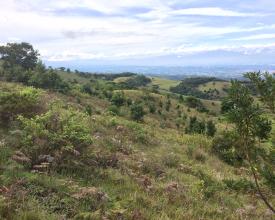
The Agua Tica Water Fund and LandScale: Achieving integrated watershed management at scale

The LandScale Pilot in Greater San José Metropolitan Area, Costa Rica, commenced in 2020 and entails setting up a public-private partnership to restore and conserve the watershed around San José, thereby ensuring sustainable water supply for its people and economy. IUCN is the Implementing Partner while FUNDAECOR and Agua Tica are Strategic Partners.
Agua Tica is a local water fund that unites key water suppliers and beverage companies to invest in watershed conservation and restoration activities. LandScale enables Agua Tica to track progress at the landscape level towards improving socioeconomic and environmental outcomes, to communicate their achievements to existing funders, and to attract new members or investors. It also serves as a tool to align Agua Tica’s activities with those of other landscape actors to ensure their diverse efforts are resulting in the positive changes they are all striving for.
Impacts
Agua Tica supports regeneration and conservation of forest in 607 hectares of critical water recharge areas through Payment for Environmental Services. It is estimated that, as a result, up to 603.000 m3 of water have been replenished so far.
The use of the LandScale framework is part of Agua Tica’s effort to link to other public and private actors of substantial importance at landscape level, such as the coffee, livestock and sugar cane production sectors, by aligning their goals and ensuring that their activities translate into progress towards common goals.
LandScale provides globally accepted indicators and metrics to assess and communicate sustainability at scale: in the case of the coffee sector, these indicators are suitable to capture the contribution of shade trees and reforestation activities implemented by coffee producers in conserving water and biodiversity habitat at landscape level. In turn, coffee farmers and companies will be able to credibly communicate their contribution to landscape sustainability in order to differentiate their coffee in the marketplace.
Similarly, Agua Tica might use LandScale to support the livestock sector in complying with deforestation-free and on-farm water quality requirements to facilitate access to the EU market, which would provide further incentives to invest in silvopasture and waste management practices for the entire sector.












